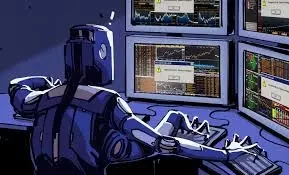High-frequency trading (HFT) is a type of trading where powerful computer programs execute large numbers of orders within fractions of a second. HFT employs advanced algorithms to study many markets and place orders based on market conditions.
The most profitable traders are usually those who have the quickest execution speeds. HFT is also marked by high turn-over and order-to-trade ratios.
Important points:
- HFT is advanced algorithmic trading in which numerous orders are being carried out within seconds.
- It provides liquidity to the markets and wipes out minute bid-ask spreads.
- HFT has been criticized as a means for giant firms to take advantage over traders.
- A further grievance is that the liquidity generated by this kind of trading is transient—it vanishes in seconds, so it cannot be utilized by traders.
Delicacy Of HFT:
High-frequency trading (HFT) is a form of algorithmic trading. Traders can employ HFT when they review critical data to make a choice and close deals within a couple of seconds. HFT allows for huge trade volumes in a very short period of time while monitoring market fluctuations and detecting arbitrage scenarios.
Features Of High-Frequency Trading Are:
- Trading at high velocities
- Great quantity of transactions made
- Short-term investment horizons
- Due to the intricacies and complications that come with HFT, it is not surprising that it is widely employed by banks, other financial institutions, and institutional investors.
It came into use when exchanges began providing incentives for businesses to provide liquidity to the marketplace. For example, the New York Stock Exchange (NYSE) has a subset of liquidity providers known as supplemental liquidity providers (SLPs) that tries to introduce competition and liquidity for the current quotes in the exchange.
The SLP was implemented after the Lehman Brothers’ collapse in 2008, when investors were most concerned about liquidity. As a reward to firms, the NYSE offers a fee or rebate for offering said liquidity. With daily transactions running into millions, this translates into a huge amount of profits.
Some of the most well-known HFT companies are Tower Research Capital, Citadel LLC, Graviton research LLP, and Virtu Financial.
Advantage:
The key advantage of high-frequency trading is the simplicity and speed at which trades are accomplished. Traders and banks have the capacity to make many trades within a span of a few seconds.
HFT has enhanced market liquidity and eliminated bid-ask spreads that would otherwise have been too minute. This was tried by imposing fees on HFT, which caused bid-ask spreads to widen. A study evaluated how Canadian bid-ask spreads varied when the government imposed fees on HFT. It discovered that market-wide bid-ask spreads widened by 13% and retail spreads widened by 9%.
Disadvantage:
HFT is contentious and received some fierce critique. It has displaced several broker-dealers and relies on mathematical models and algorithms to make choices, removing human choices and interaction from the equation.
Decisions happen in milliseconds, and this could result in big market moves without reason.
Another criticism of HFT is it makes big businesses richer at the expense of small timers. Its ghost liquidity, as it’s commonly referred to, is another source of criticism: HFT-created liquidity appears on the market one second and is gone the next, which does not allow for traders to effectively trade this liquidity.
| Pros | Cons |
| Big amount of transactions all at once Quick and easy process Enhances market liquidity Eliminates small bid-ask spreads | Eliminates human decision-making and interaction Rapid trades might lead to large market movements Traders can’t sell liquidity |
How Does High-Frequency Trading Work?
High-frequency trading (HFT) is automated trading. It is all about using computer programs to scan for trading possibilities. HFT is widely used by banks, financial institutions, and institutional traders. It gives these players a way to buy and sell numerous trades in an extremely short timeframe. Since it is all mechanized, buying and selling become a breeze. HFT is what gives liquidity to the marketplace. But it can cause substantial market movements and takes the touch of human operators out of it.
How Fast Is a High-Frequency Trade?
High-frequency trading is quick. It can be as quick as 10 milliseconds. In certain instances, it may be even shorter to trade in a large order.
Conclusion:
Technology advancements have benefited a large portion of the financial sector, including the world of trading. Computers and algorithms facilitate finding opportunities and faster trading. High-frequency trading enables such large trading organizations to do large orders with high speed.
While it simplifies things, HFT (and other forms of algorithmic trading) does have its negatives—most prominently the risk of inducing large market movements, as it did in 2010, when the Dow experienced a large intraday decline.
Read More: Head And Shoulders Chart Pattern


[…] Read More: What is High-Frequency Trading (HFT)? […]